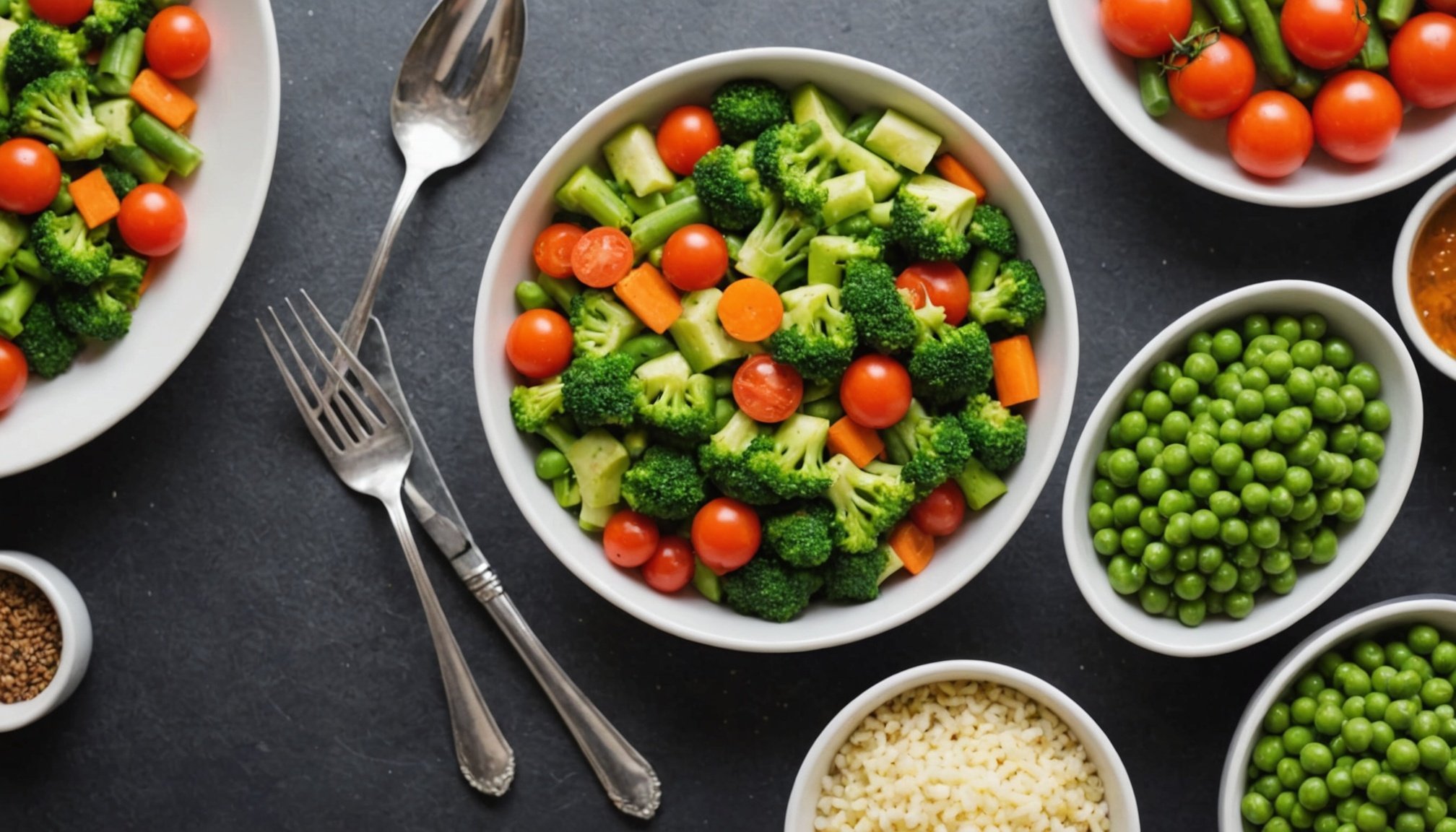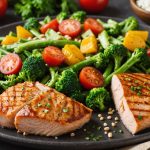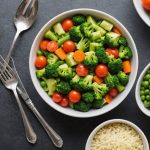With the hustle and bustle of modern life, finding easy and effective ways to maintain a balanced diet can be a challenge. Frozen vegetables present a unique solution, offering convenience without compromising on nutrition. These often-overlooked allies in the kitchen are not just convenient; they are a powerful component in crafting meals that support weight loss. Understanding how to integrate them seamlessly into your diet can revolutionize your approach to healthy eating.
Why Choose Frozen Vegetables?
Frozen vegetables have long been a staple in supermarkets, but their potential in weight loss diets is often underutilized. These vegetables are usually harvested at peak ripeness and flash-frozen, preserving nutrients and flavor. Unlike fresh produce, which can spoil quickly, frozen varieties maintain their quality longer, making them an excellent choice for those who want to manage their weight effectively.
In the same genre : What simple recipes can I use to incorporate more lean proteins into my diet?
Moreover, frozen vegetables are versatile, offering a variety of choices from peas to spinach, which can be incorporated into diverse meals. This variety helps keep meals interesting and ensures you get a broad range of nutrients. Importantly, they require minimal preparation time, fitting perfectly into busy schedules without compromising on nutrition.
From a cost perspective, frozen vegetables are often more economical than their fresh counterparts, especially when purchased in bulk. This affordability can make maintaining a balanced diet more accessible for everyone. Plus, with the growing awareness of food waste, using frozen vegetables can help reduce the amount of produce that goes uneaten, supporting both your health and the planet.
Also to discover : What are some strategies to reduce mindless snacking at home?
Incorporating Frozen Vegetables in Meal Prep
Meal prepping with frozen vegetables is an excellent strategy for staying on track with weight loss goals. Start by planning your weekly meals, focusing on incorporating a variety of frozen vegetables to maximize nutrient intake. Consider using them in stir-fries, soups, or casseroles, which can be made in larger batches and stored for the week.
Using frozen vegetables in soups or stews allows you to easily add bulk and flavor without additional calories. Simply toss them into a pot with broth and your choice of lean protein, and let the flavors meld together. This method not only saves time but also ensures a hearty, satisfying meal that’s ready to go.
For those who prefer more structured meals, try layering frozen vegetables in a casserole dish with whole grains like quinoa or brown rice. Add a source of lean protein, such as chicken or tofu, and bake until everything is cooked through. This one-dish meal is not only convenient but also packed with nutrients.
Don’t forget about smoothies! Frozen spinach or kale can be blended into your favorite fruit smoothie, providing an easy way to sneak in extra greens. This trick is especially useful for those mornings when time is tight, but you still want to start your day on a healthy note.
Enhancing Flavor Without Extra Calories
One concern often raised about frozen vegetables is their taste compared to fresh ones. However, with the right techniques and seasoning, you can enhance their flavor without adding extra calories. The key is in the preparation and seasoning.
Roasting is a fantastic method to bring out the natural sweetness in vegetables like carrots, Brussels sprouts, and broccoli. Drizzle them lightly with olive oil and sprinkle with herbs or spices before roasting at high temperature. This method caramelizes the natural sugars in the vegetables, resulting in a flavorful dish that’s low in calories.
Another trick is to use seasonings like garlic, ginger, or lemon zest to add layers of flavor. These add-ins can elevate a simple vegetable stir-fry or soup, making it more appealing without turning to calorie-dense sauces.
Experimenting with international spices such as curry powder, cumin, or smoked paprika can also transform your frozen vegetable dishes into something special. These spices can add warmth and depth, encouraging you to enjoy your vegetables more, which ultimately supports your weight management goals.
The Role of Portion Control and Balance
While frozen vegetables are a fantastic tool in your weight loss arsenal, it’s essential to pair them with balanced portions of other food groups. Understanding the role of portion control can ensure you stay on track without feeling deprived.
When building a meal, aim for your plate to hold a variety of colors and food types. This not only makes the meal visually appealing but ensures a range of nutrients. Incorporate lean proteins such as chicken, turkey, or beans, healthy fats like avocado or nuts, and whole grains to accompany your vegetables.
Pay attention to serving sizes, especially when it comes to carbohydrates and fats, which can quickly add calories if not monitored. Use tools like measuring cups or food scales to ensure you’re consuming appropriate amounts.
Regularly incorporating frozen vegetables into your meals can also promote satiety, thanks to their high fiber content. This means you’ll feel fuller for longer, reducing the temptation to snack unnecessarily. Remember, the goal is a sustainable approach to eating that you can maintain long-term, leading to successful weight management.
Embracing the versatility and convenience of frozen vegetables can profoundly impact your weight loss journey. From their nutritional benefits and long shelf life to their adaptability in recipes, these vegetables are more than just an afterthought in your freezer.
By incorporating these vibrant ingredients into your meals, you ensure a varied and nutrient-rich diet that supports weight management. Whether it’s through creative meal prep, experimenting with flavors, or maintaining balanced portions, frozen vegetables are a resourceful ally in your quest for health. Embrace their potential, and you’ll find that they are indeed an invaluable addition to your kitchen repertoire.











